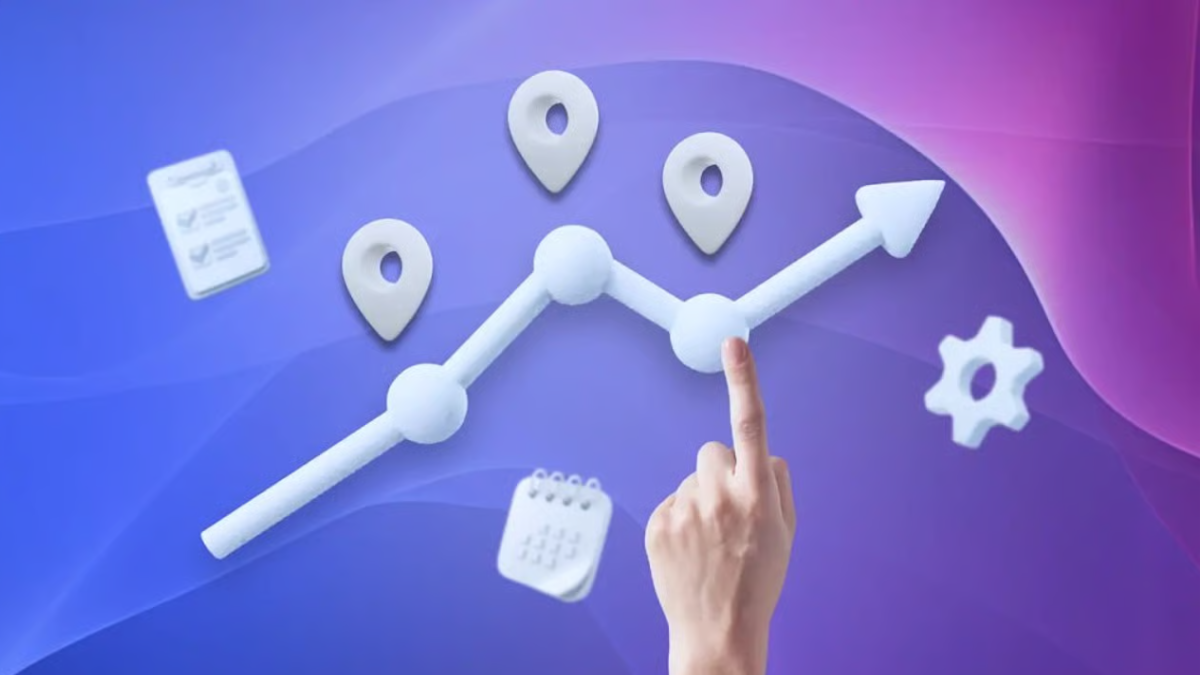In the ever-evolving landscape of business-customer relationships, managing the client journey has become a critical factor for success. Companies now face increasing pressure to deliver seamless, personalized, and consistent experiences across all touchpoints. The traditional siloed approach to client engagement is no longer sufficient. This has led to the rise of all-in-one client journey management solutions—tools that unify marketing, sales, customer service, and analytics to deliver a 360-degree view of each client.
In this article, we’ll explore the components, benefits, implementation strategies, and challenges of using an all-in-one solution to manage client journeys.
What is Client Journey Management?
Understanding the Client Journey
The client journey refers to the complete experience a customer has with a brand—from first contact to post-sale support and loyalty. It typically includes:
- Awareness
- Consideration
- Purchase
- Retention
- Advocacy
Managing this journey means tracking how customers interact with your brand and optimizing those touchpoints to enhance engagement, satisfaction, and lifetime value.
Why Traditional Approaches Fall Short
Siloed Systems Lead to Disjointed Experiences
Many businesses still operate in silos, with separate tools for CRM, marketing automation, customer support, and analytics. This disjointed structure leads to:
- Inconsistent communication
- Redundant data entry
- Fragmented customer data
- Poor customer experience
The Need for Centralization
An all-in-one solution centralizes these functions into a unified platform, enabling businesses to manage and optimize every step of the client journey in one place.
Key Features of an All-in-One Client Journey Management Solution
1. Unified Customer Profiles
Consolidate customer data from all channels to build comprehensive profiles that include behavior, preferences, purchase history, and support interactions.
2. Multi-Channel Engagement
Manage communication across email, SMS, chat, social media, and more from one interface, ensuring consistent messaging and brand voice.
3. Marketing Automation
Create automated workflows to nurture leads, onboard new clients, and re-engage inactive users with personalized content.
4. Sales Enablement Tools
Track leads through the pipeline, score prospects, and assign tasks to sales reps with integrated CRM and sales tools.
5. Customer Support Integration
Integrate ticketing, live chat, and knowledge base support into the customer journey to provide fast, effective service.
6. Data Analytics and Reporting
Monitor KPIs and campaign performance through real-time dashboards, predictive analytics, and customer segmentation tools.
Benefits of Using an All-in-One Solution
Enhanced Customer Experience
When teams have access to a unified customer view, they can deliver more personalized and timely experiences that delight clients.
Improved Team Collaboration
Sales, marketing, and support teams can work together more efficiently with access to shared data, tasks, and communication history.
Streamlined Operations
Eliminate the need for juggling multiple platforms and integrations, reducing complexity and minimizing human error.
Scalability
All-in-one platforms can scale with your business, supporting everything from small campaigns to enterprise-wide customer engagement strategies.
Cost Efficiency
Paying for one integrated system is often more cost-effective than managing multiple tools and licenses.
How to Choose the Right Solution
Define Your Goals
Are you looking to improve lead nurturing? Increase retention? Automate support? Clearly outline your objectives before evaluating platforms.
Consider Integration Capabilities
Ensure the platform can integrate with your existing tools, such as accounting software, eCommerce platforms, or ERPs.
Evaluate User Experience
Choose a solution with an intuitive UI, good documentation, and training resources to ensure user adoption.
Look for Customization
A flexible platform should allow you to tailor workflows, reports, and automations to your unique business needs.
Vendor Support and Reliability
Evaluate customer support, uptime guarantees, and user reviews before committing to a platform.
Implementation Strategy
Step 1: Audit Your Current Systems
Identify all existing tools and data sources to understand what needs to be migrated or integrated.
Step 2: Set Up a Project Team
Create a cross-functional team from sales, marketing, support, and IT to guide the implementation process.
Step 3: Data Migration and Integration
Clean and standardize your customer data before importing it into the new system. Use APIs or middleware tools for integration.
Step 4: Customize Workflows
Configure automation workflows, communication templates, and customer segments based on your business model.
Step 5: Staff Training
Train all users on how to use the new platform effectively. Provide documentation and conduct refresher courses.
Step 6: Launch and Optimize
Roll out the platform in phases. Monitor KPIs closely and adjust workflows as needed for continuous improvement.
Real-World Use Case: How an All-in-One Platform Transformed a Mid-Size Business
The Challenge
A mid-sized software company struggled with lead leakage, misaligned teams, and slow response times. They used five different platforms for CRM, email marketing, customer support, and analytics.
The Solution
They adopted an all-in-one platform that integrated their CRM, marketing, support, and analytics under one roof.
The Result
- Lead conversion increased by 35%
- Customer satisfaction improved by 40%
- Response time dropped by 60%
- Marketing ROI increased by 22%
Challenges and How to Overcome Them
Resistance to Change
Solution: Engage employees early, provide comprehensive training, and showcase the benefits clearly.
Data Privacy Concerns
Solution: Ensure your platform is GDPR and CCPA compliant. Use secure encryption and data access controls.
Integration Hurdles
Solution: Choose a platform with open APIs and a strong partner ecosystem for seamless integration.
Cost Justification
Solution: Highlight long-term ROI through increased efficiency, better retention, and reduced churn.
Future Trends in Client Journey Management
AI and Machine Learning
Predictive analytics, intelligent recommendations, and automated insights are becoming standard features.
Hyper-Personalization
Advanced segmentation and behavioral targeting are enabling ultra-personalized journeys at scale.
Voice and Conversational Interfaces
Voice assistants and chatbots are being integrated into platforms for real-time, natural interactions.
Customer Data Platforms (CDPs)
Platforms are evolving into CDPs, unifying even more data points for real-time action and intelligence.
Conclusion
Managing the client journey is no longer a linear or simple process. With increasing customer expectations and rapidly evolving digital touchpoints, businesses must adopt comprehensive, integrated solutions to stay competitive. An all-in-one client journey management solution offers the functionality, scalability, and insights needed to deliver seamless, personalized experiences that convert prospects into loyal customers.
From marketing to support and beyond, unifying your systems under one platform isn’t just convenient—it’s essential for long-term success.
FAQs
What is an all-in-one client journey management solution?
It’s a unified platform that integrates CRM, marketing automation, customer support, and analytics tools to manage and optimize the entire customer experience.
How does it differ from using separate tools?
An all-in-one solution eliminates silos, reduces redundancy, improves team collaboration, and provides a complete view of the customer.
Is an all-in-one solution suitable for small businesses?
Yes. Many vendors offer scalable solutions tailored for small and medium-sized enterprises, often at affordable price points.
What industries benefit the most from these platforms?
Virtually all industries—from retail and SaaS to healthcare and finance—can benefit. Any business with a customer base can use such tools to enhance engagement.
How long does it take to implement?
Depending on the complexity of your operations and data migration, implementation can take anywhere from a few weeks to several months.
Are these platforms secure?
Most modern solutions are GDPR/CCPA compliant and offer robust security features like data encryption, role-based access, and audit logs.
Can it integrate with my existing tools?
Many all-in-one platforms support API-based integration with third-party tools such as ERP systems, payment gateways, and CMS platforms.
What’s the ROI of implementing an all-in-one solution?
Typical benefits include higher conversion rates, increased customer retention, improved productivity, and better marketing ROI.
What’s the best all-in-one solution?
Some popular platforms include HubSpot, Zoho One, Salesforce Essentials, and ActiveCampaign. The best one depends on your specific needs, budget, and industry.
Do I need IT support to manage it?
Not necessarily. Most modern platforms are user-friendly and offer low-code or no-code customization. However, having IT involved during setup can help avoid technical pitfalls.



